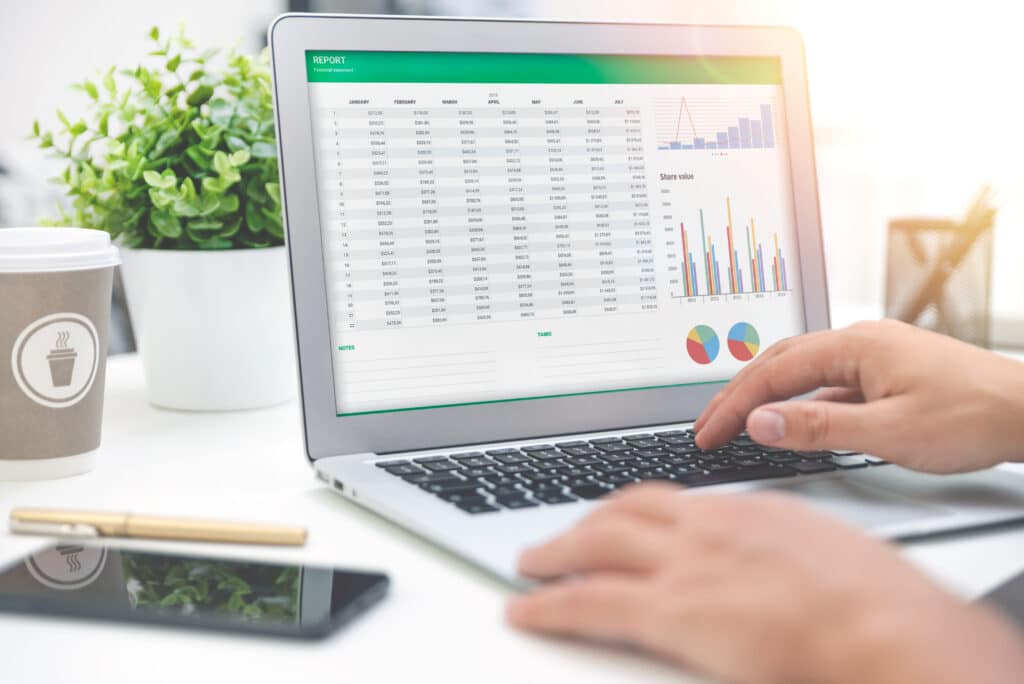I love spreadsheets, too. They work. They really do… until they don’t.
Spreadsheets Are Awesome
Can we take a moment to appreciate what Microsoft Excel, Google Sheets, Apple Numbers, and all the other spreadsheet software out there can do for us? They help us with financial tracking and calculations, but that’s only a fraction of what people use spreadsheets for.
As I’m writing this, I have two spreadsheets open. One is tracking my time for the day so I know how many hours I worked and when I took breaks for lunch, my haircut, getting ready for some travel, and whatever other needs popped up during the day. The other spreadsheet is a list of priority tasks for the rest of the week, which allows me to easily adjust my priorities when emergent needs arise.
I have another spreadsheet to track all the content that will go on this website and the related social media posts needed to share that content further.
I could go on and on about how I use spreadsheets, and you likely could, too.
There’s a whole section of TikTok blowing up over how to use spreadsheets more effectively. It’s wild.
All that, and yet…
Your spreadsheet is holding you back.
When to Leave the Spreadsheet Behind
This isn’t an effort to get you to delete your favorite spreadsheet software entirely. I just want to point you to a few use cases where an Excel doc or Google Sheets link might be too limiting.
1. You Need to Share Data Widely with Customers, Other Key Stakeholders
A spreadsheet can certainly be shared with more people, but there’s a look of “hey, I just slapped this together before our call” that goes with a spreadsheet. If you’re trying to inspire confidence from your customers with a fully branded experience, then you likely want a dedicated system specifically for this use case.
More importantly, you lose all context when sharing important information in a spreadsheet. Usually, the data is collected and organized by some governing thought process or system that is not immediately apparent to a reviewer. If it’s important enough to share, then it’s probably trying to communicate something. The spreadsheet reinforces the info and proves the point you want to make but in isolation could even be harmful to the stated goal.
(Shameless promotional plug: this is the kind of work we’ve done for medtech companies.)

2. You Need to Be More Efficient with Your Teams’ Time
If you need to share information through a spreadsheet with a large group at a time—even internally, your audience will have to be made up of power users of that spreadsheet software in order to apply the right sorts and filters. They’ll also need to understand the relationships between all of the data to begin working with it.
Surprisingly enough, not everyone knows how to work a pivot table.
A well crafted application interface makes it quicker and easier for users to get what they need and requires little to no training.
3. You Need Other Sources to Be Able to Feed in Data Securely
Google Sheets made things easier to be able to grab data from other sources. With tools like Zapier, you don’t even have to know how to code to grab that information.
Still, if you need to lock down the security of these tools for regulatory purposes, you can’t use Zapier. You can look to teams like Redox to help with passing critical healthcare data in and out of EHRs, or you can work with others to develop any number of custom solutions.
By leaving the spreadsheet behind, you can work with systems that will allow records to be matched against one another from a variety of systems. For example, you can match your own custom records to Salesforce records to help explain which sales reps are generating the most business, and then distill that info into key metrics that can be presented back in a dashboard.

4. You Need a More Error-Proof System
I think we’ve all accidentally messed something up in a calculation or accidentally deleted an important cell within a spreadsheet without realizing it. If you’re sharing data across multiple users, the potential for this kind of error only increases. Yes, these systems will often allow you to revert to a version of the sheet where the info can be added back, but you run the risk of losing any new data added in since that error.
Large software has its own potential vulnerabilities, but it’s much easier to build in consistency in your data transformations.
Time to Reframe
As you share data more widely, you’ll start to get feedback from your audience, and they don’t necessarily think about the data in the same way you did when you were building out your initial spreadsheet. Visualizations that seem the most logical to you may not resonate with your audience.
Up until now, you’ve been able to decide exactly where each piece of information should live, in the way that made the most sense to you, but there are a lot of ways to share information. Other ways might be more broadly understood. Keep an open mind as you let others get involved to develop a system around the data.
You’ll be surprised at what’s possible.
Michael spends a great deal of time with the healthcare industry both professionally and personally, which gives him the perspective of what stakeholders on either side of the care equation need.
He began coding in 2008 and subsequently shifted his attention entirely to online marketing. Michael completed his MBA in 2018, focusing on the intersection of healthcare and marketing.
Justin Bantuelle balances the responsibilities of both the Chief Operating Officer and the Web Technology Director after having worked with Health Connective for more than a dozen years. Justin regularly leads the cross-disciplinary teams in building out and updating applications for Fortune 500 companies.
Justin keeps his technical abilities sharp by contributing to an eclectic mix of open-source and personal projects on Github.



